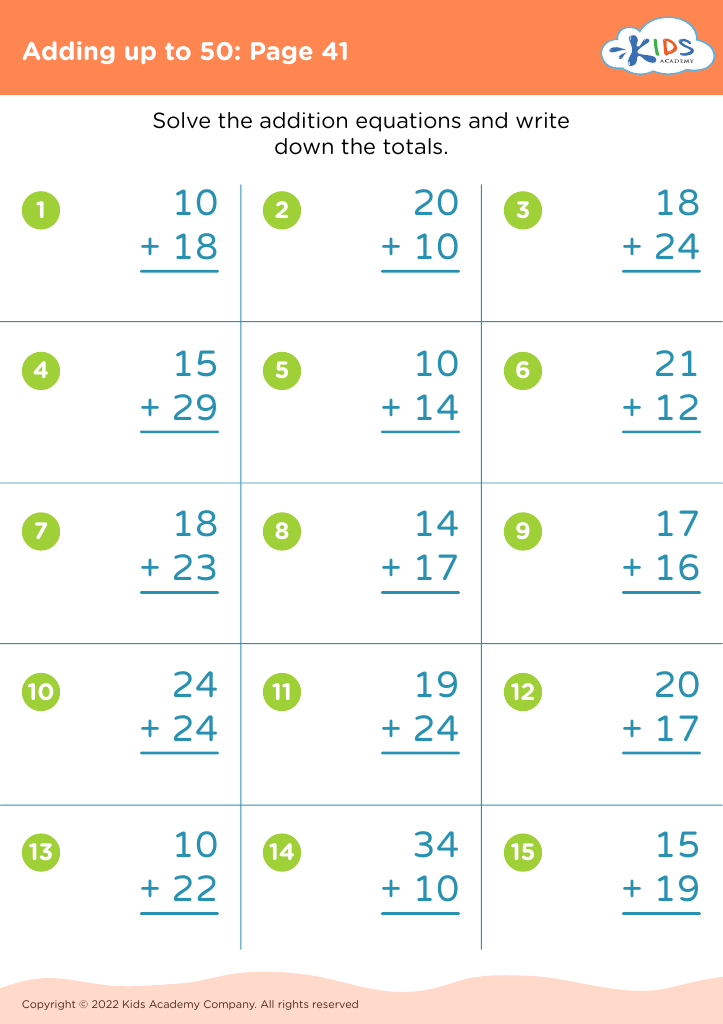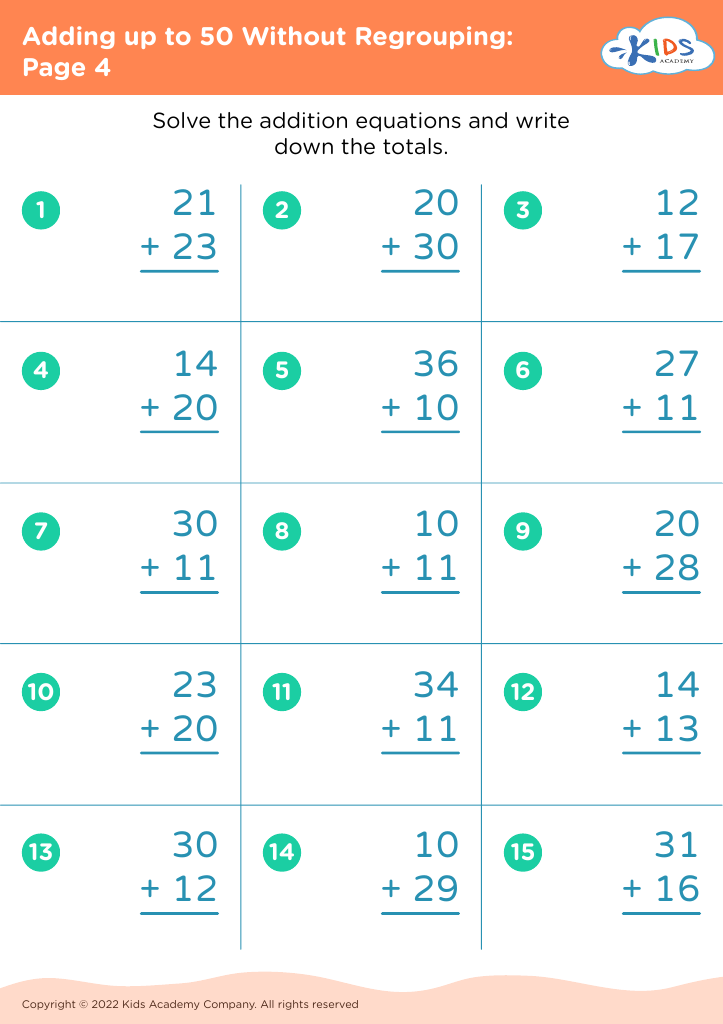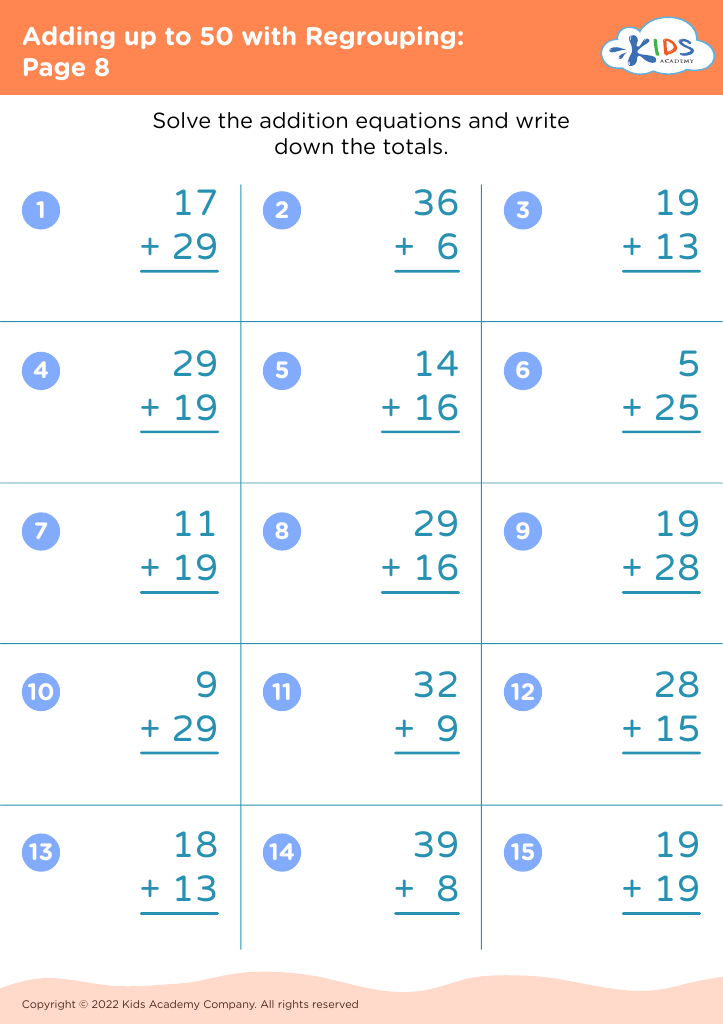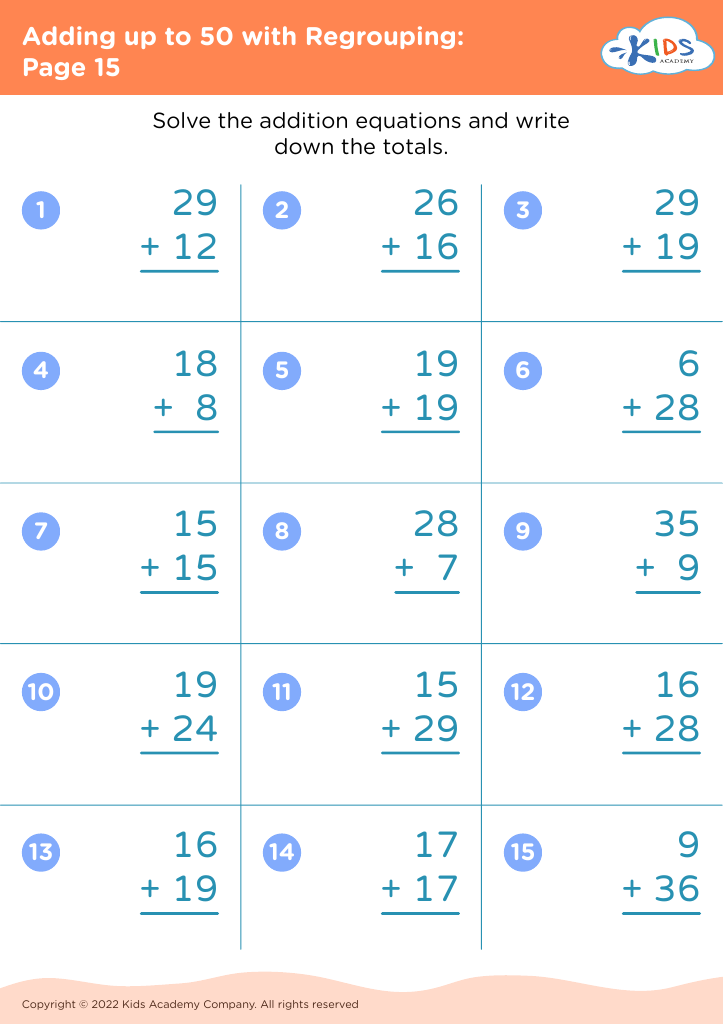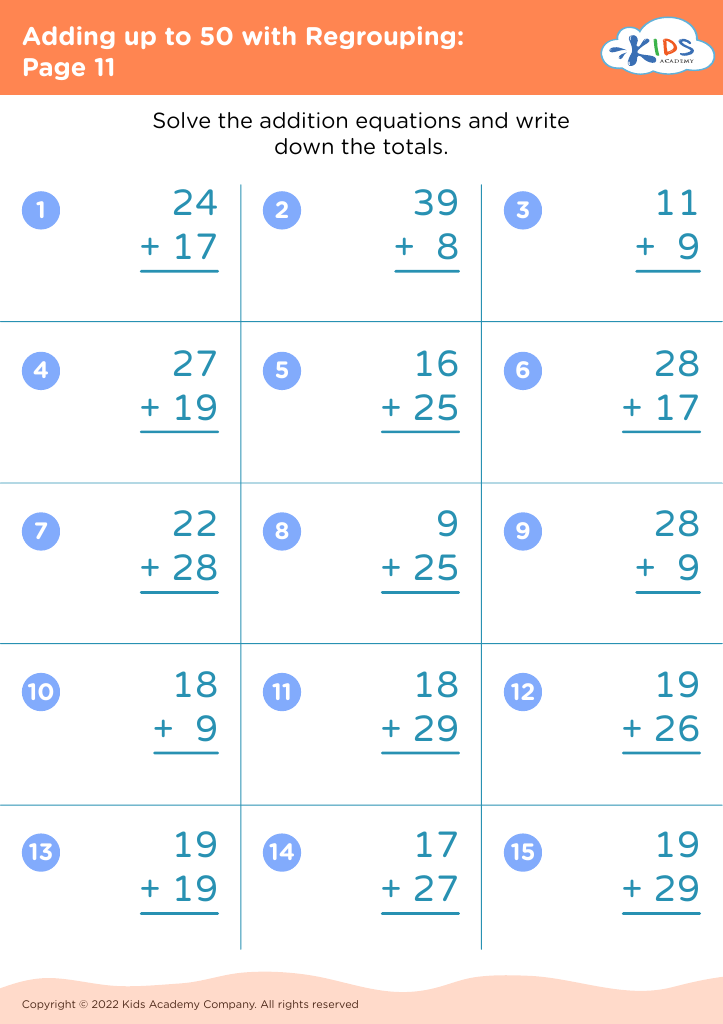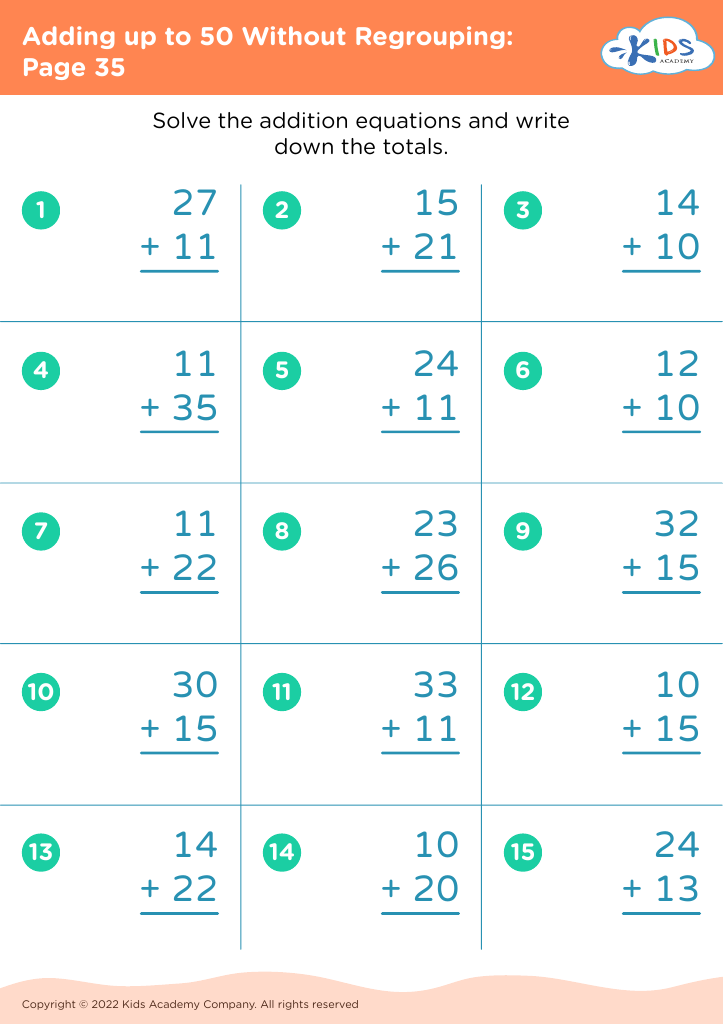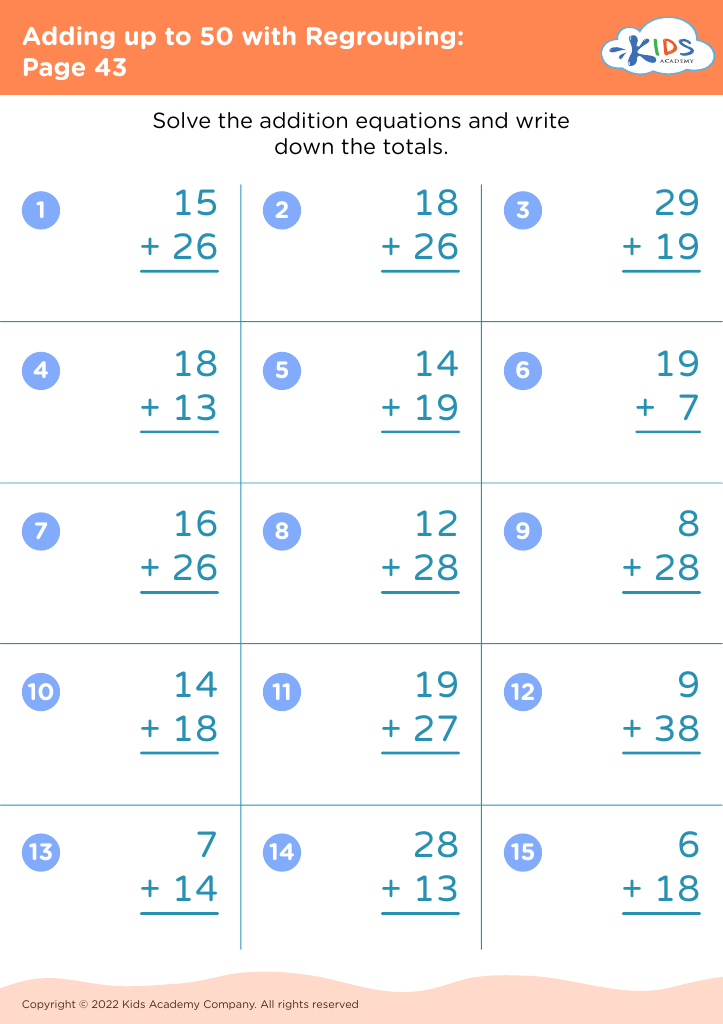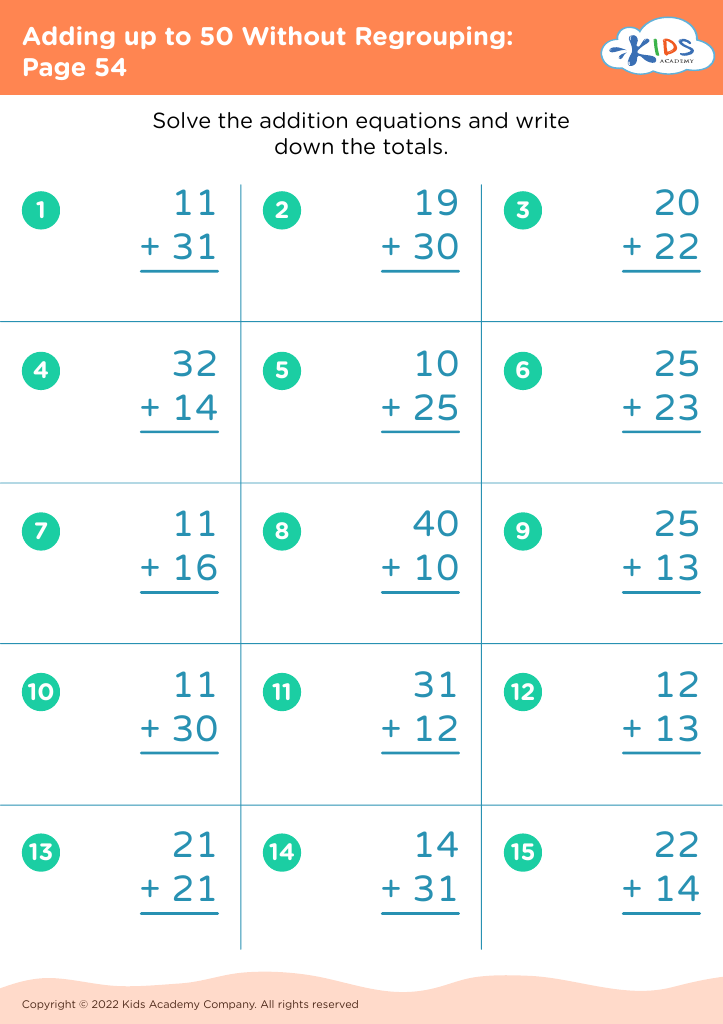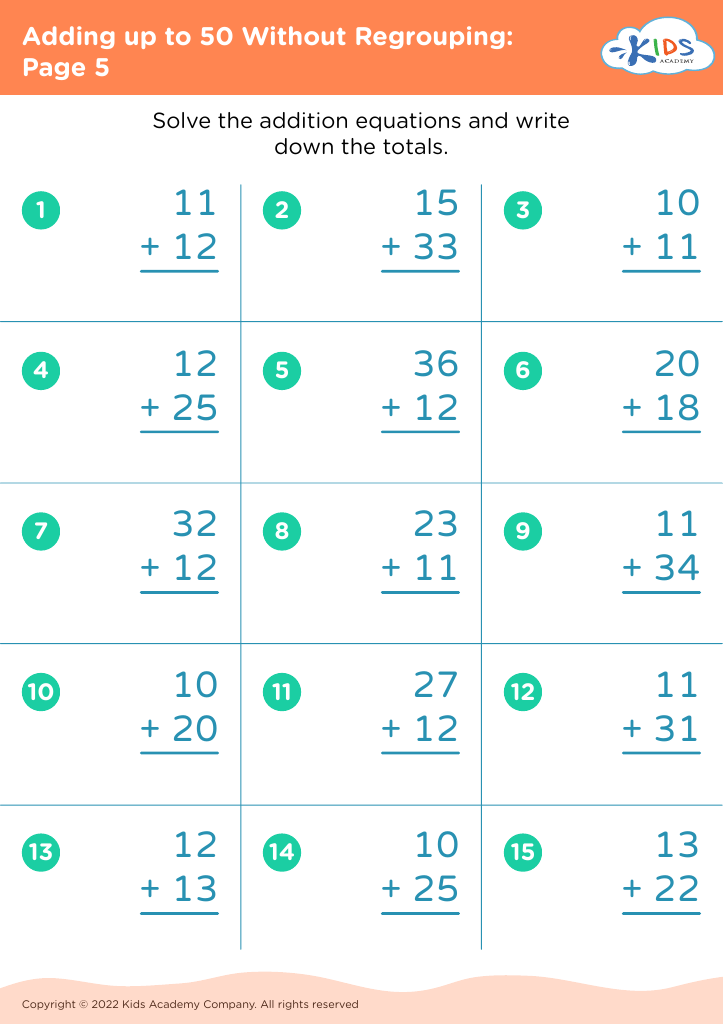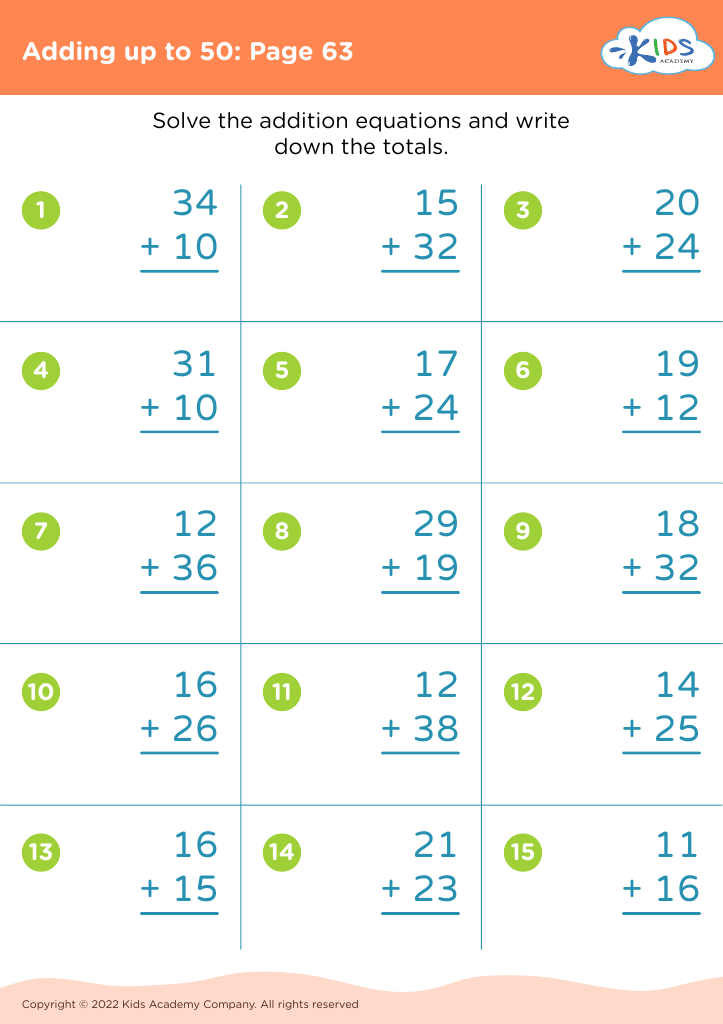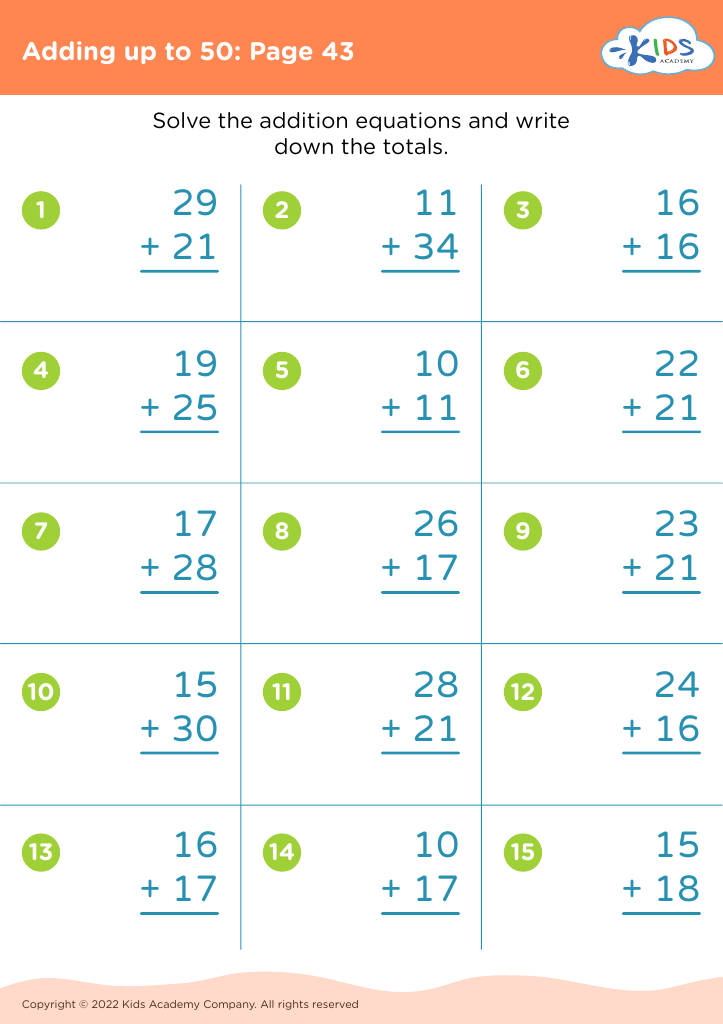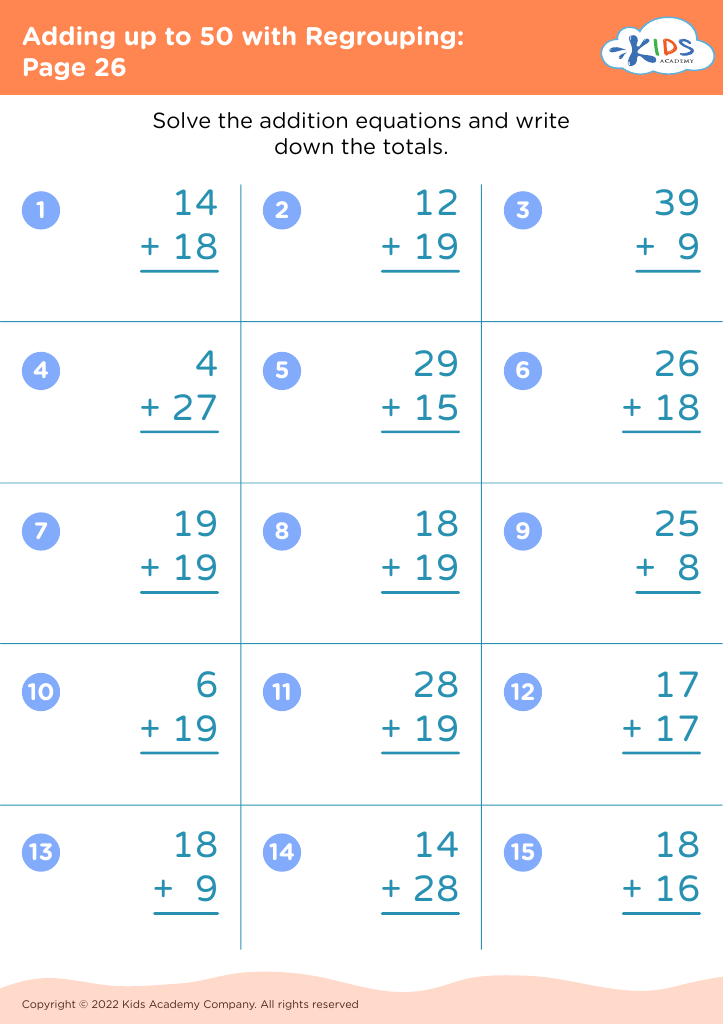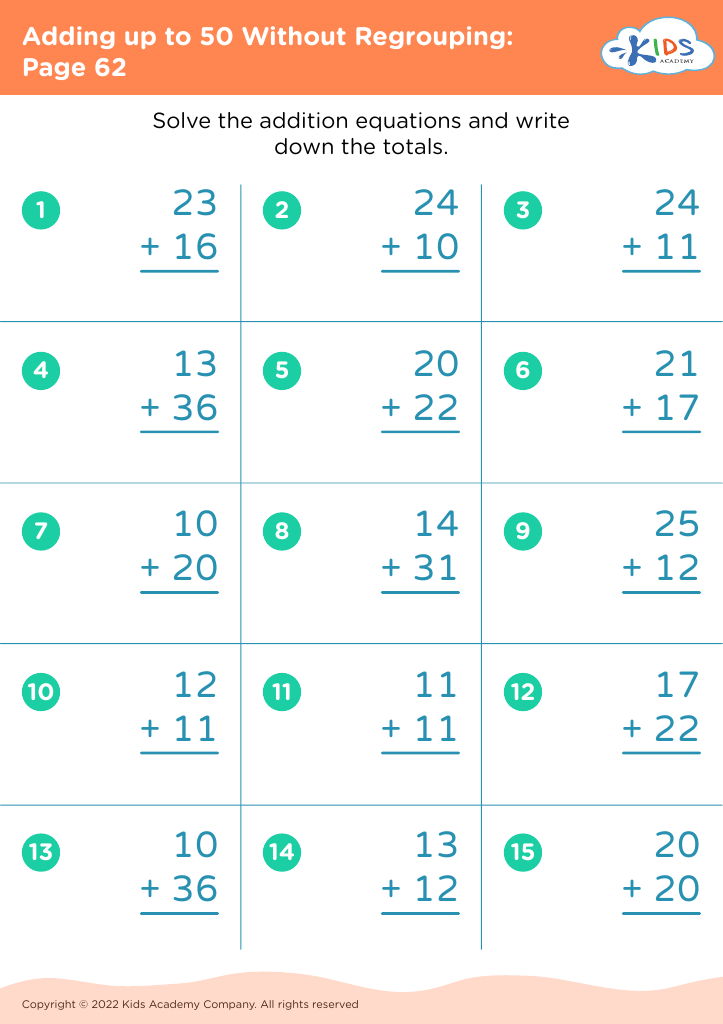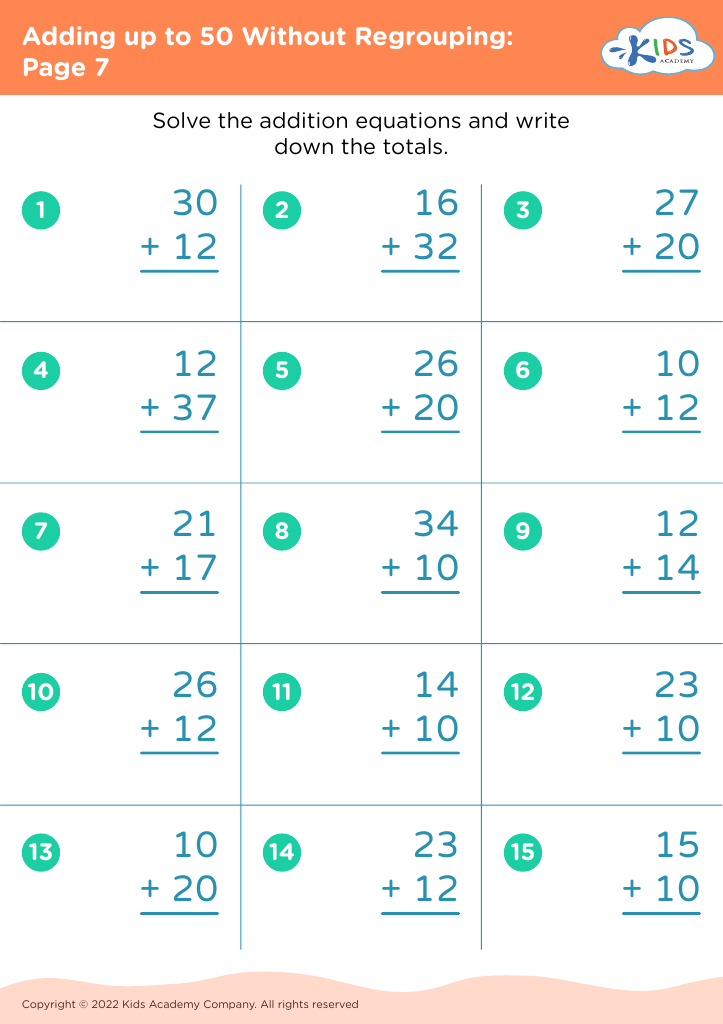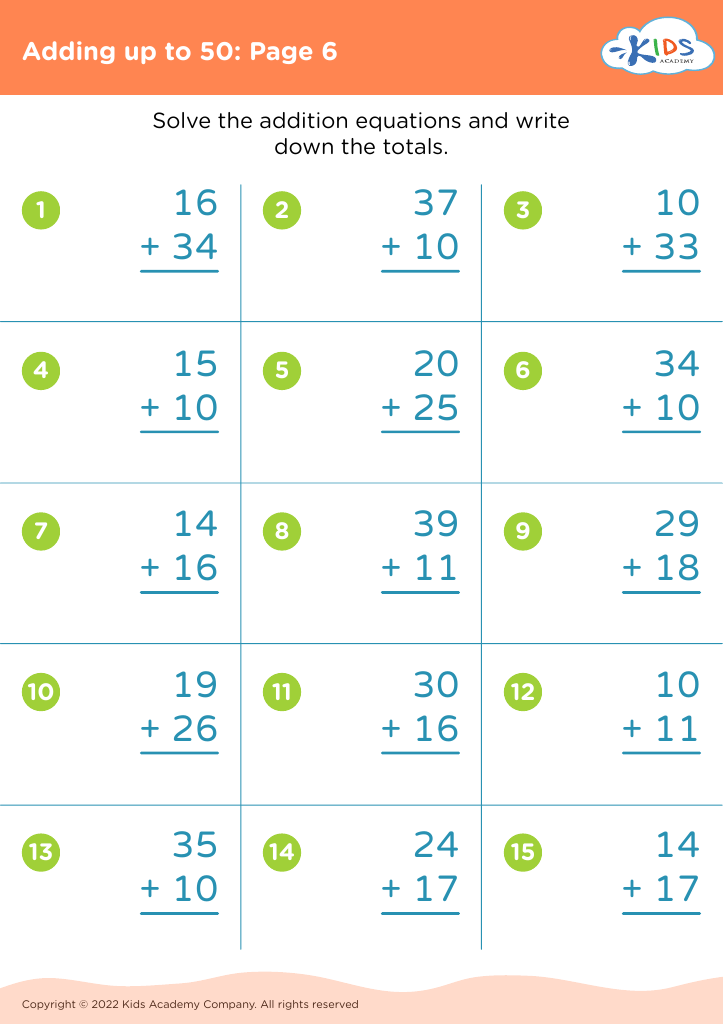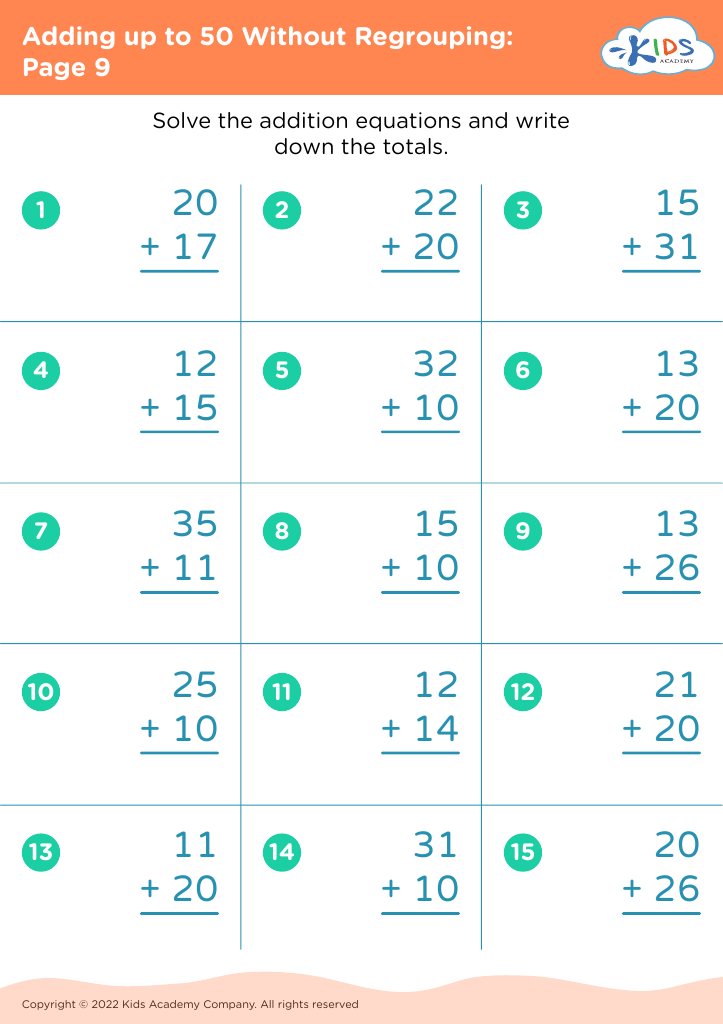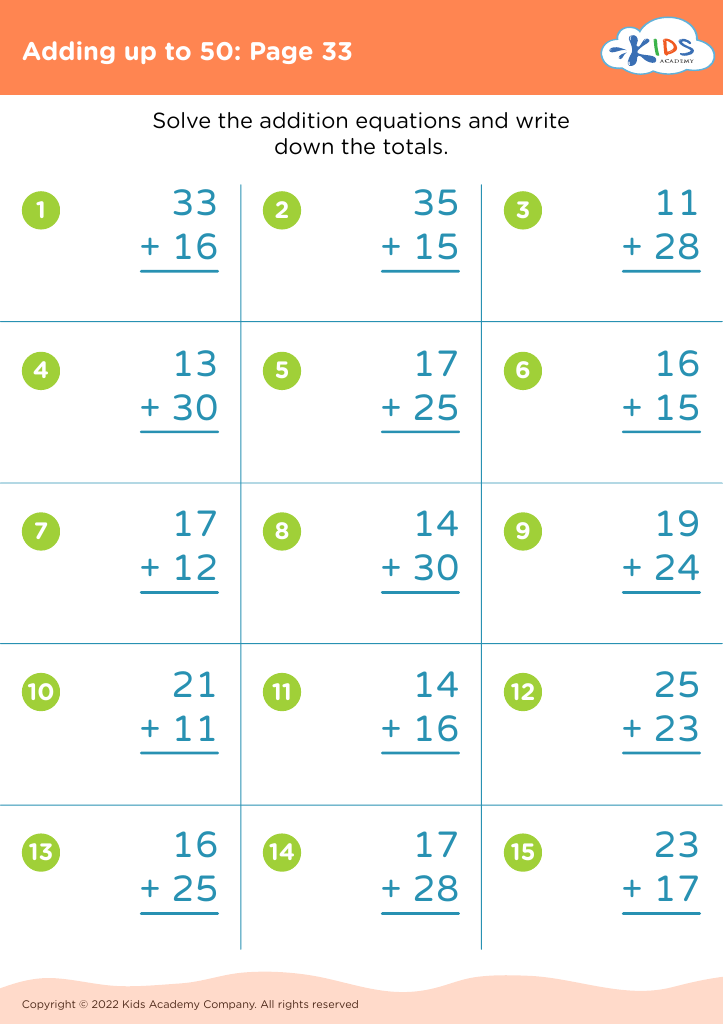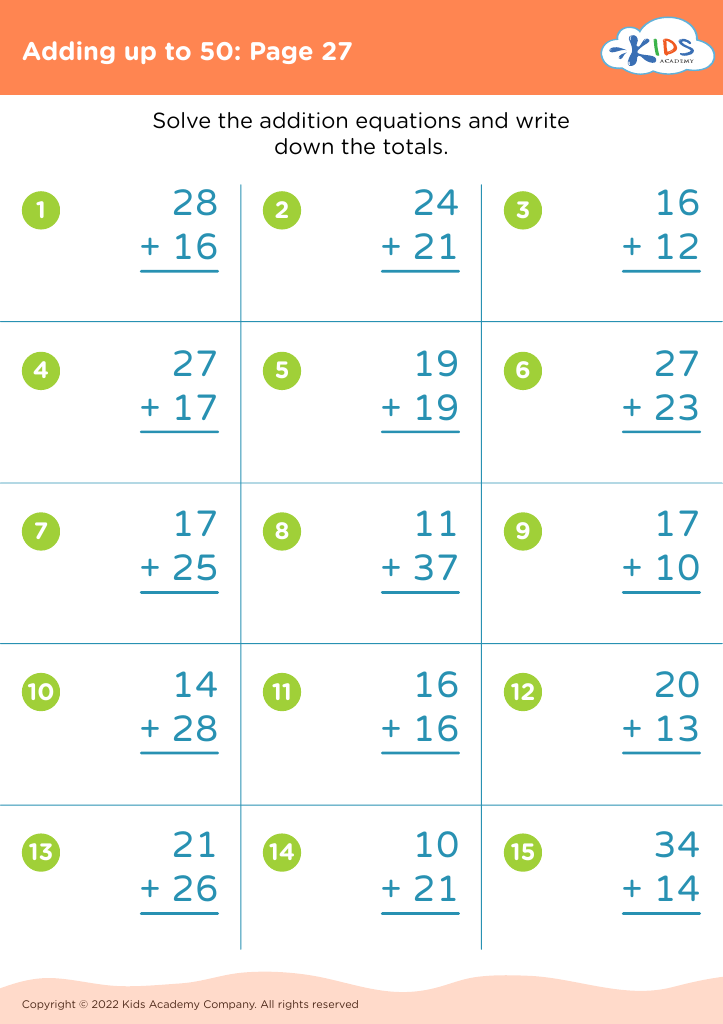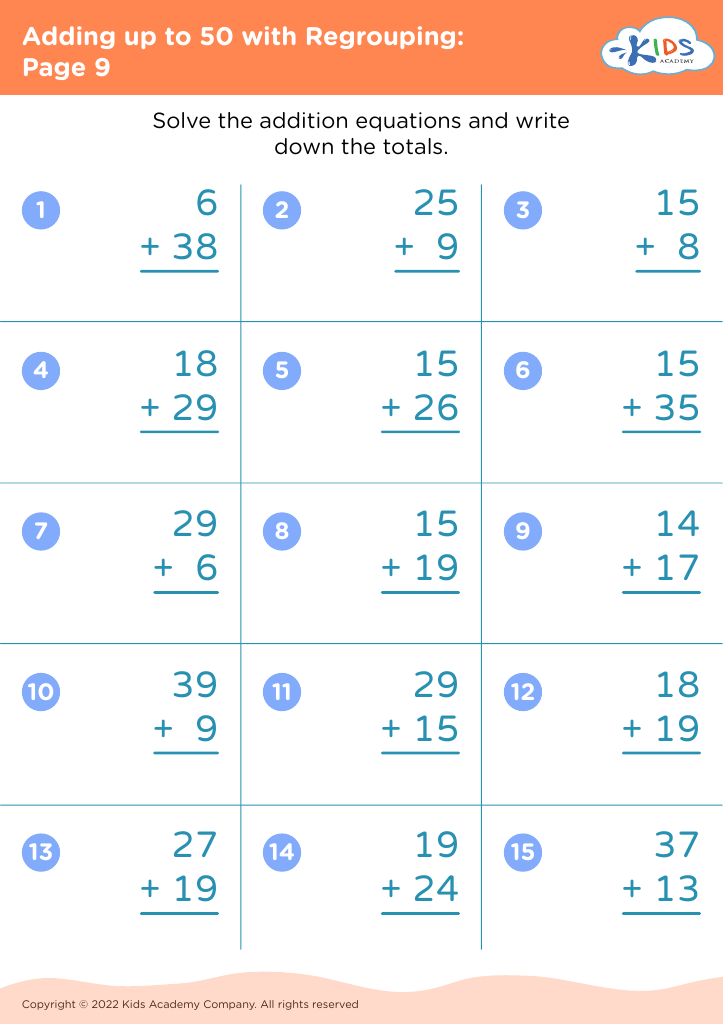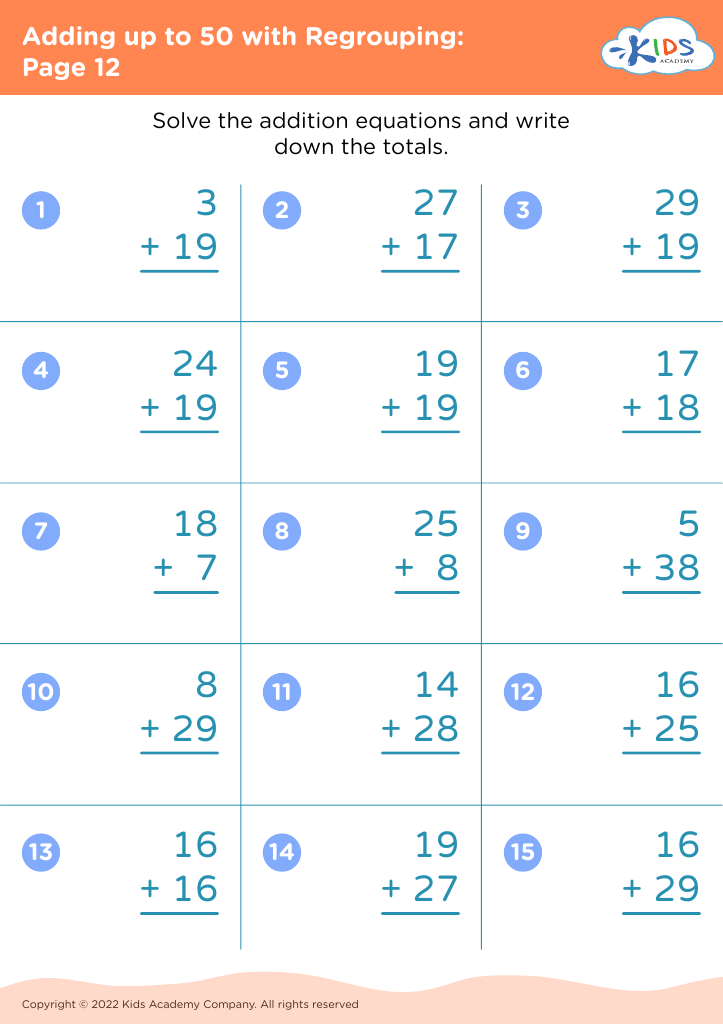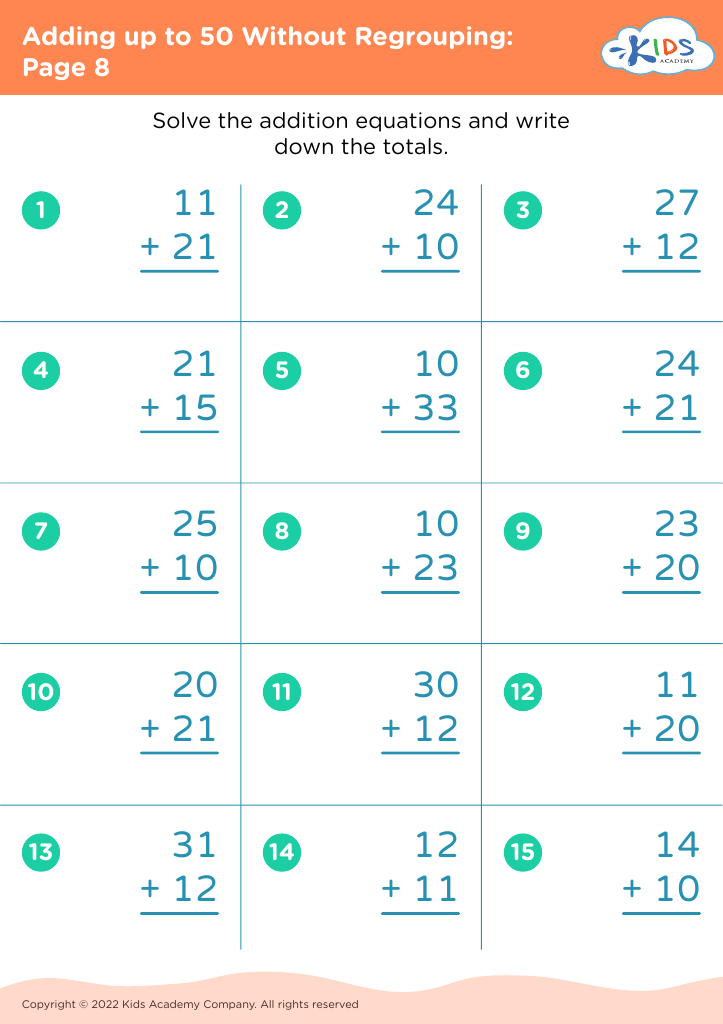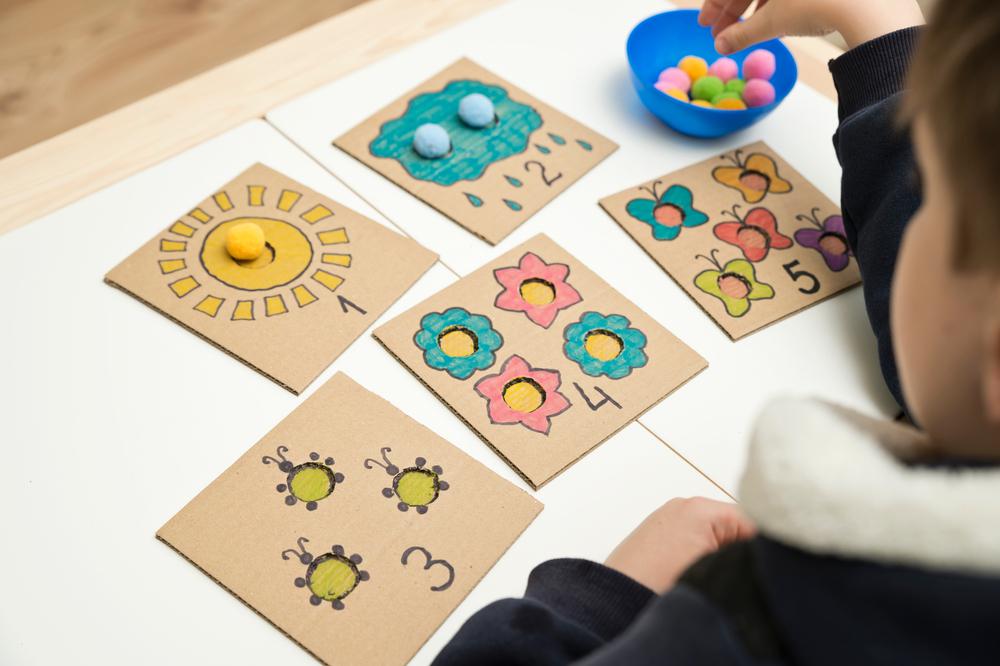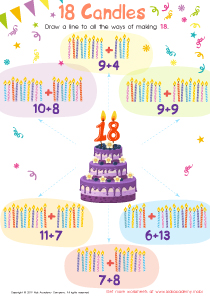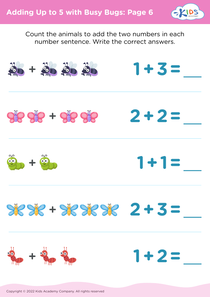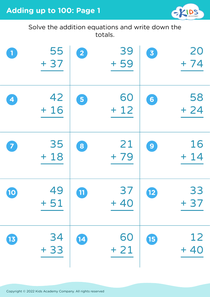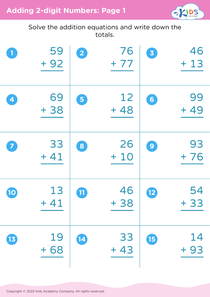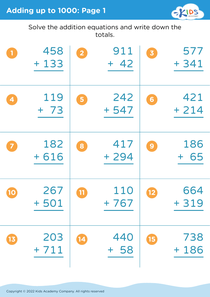Number Recognition Adding up to 50 Worksheets for Ages 5-7
43 filtered results
-
From - To
Discover our engaging "Number Recognition Adding up to 50" worksheets designed for ages 5-7. Tailored to bolster early math skills, these worksheets make learning fun and effective. Each sheet is crafted to help young learners identify, count, and add numbers up to 50 with colorful prompts and interactive activities. Perfect for classrooms or at-home practice, these resources support both teachers and parents in providing essential number recognition exercises. Start today and watch your child's confidence in mathematics multiply. Browse through our collection now at Kids Academy to find the perfect worksheets for your little mathematician!
Number recognition and the ability to add numbers up to 50 are critical skills for children aged 5-7, laying the foundation for future mathematical learning and everyday problem-solving.
Firstly, number recognition helps children identify and understand numerical values, which is essential for daily activities like counting objects, telling time, and handling money. For example, knowing the difference between a "3" and a "30" can mean the difference between counting accurately and making errors.
Moreover, adding numbers up to 50 enhances basic arithmetic skills, preparing children for more complex mathematical operations. It instills confidence as they learn to solve problems, make estimations, and comprehend basic concepts like borrowing or carrying over numbers. These mathematical foundations are integral to a child's academic progress, impacting their grasp of subjects beyond math, such as science or computer programming.
Furthermore, developing these skills at an early age nurtures positive attitudes towards learning and problem-solving. It encourages perseverance, logical thinking, and attentiveness. It's not just about numbers; it's about building a toolkit of skills that children will carry throughout their education and into adulthood.
In summary, investing time and resources into number recognition and addition skills for young children ensures they possess the essential building blocks for academic success and everyday life competence.

